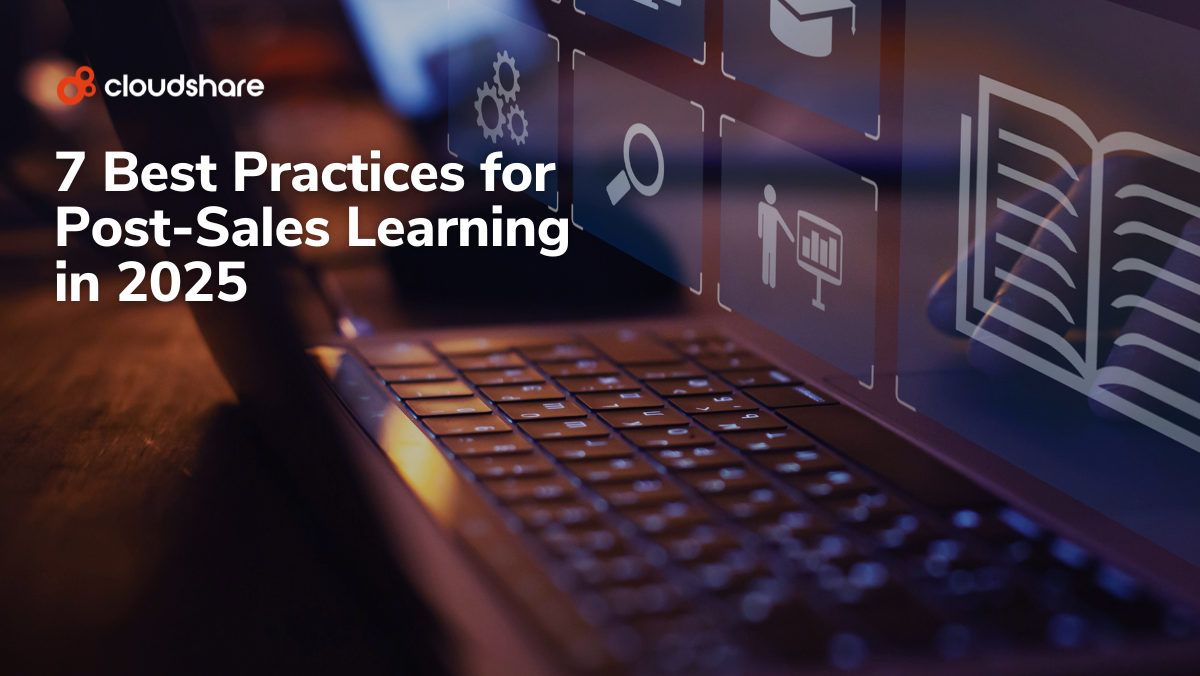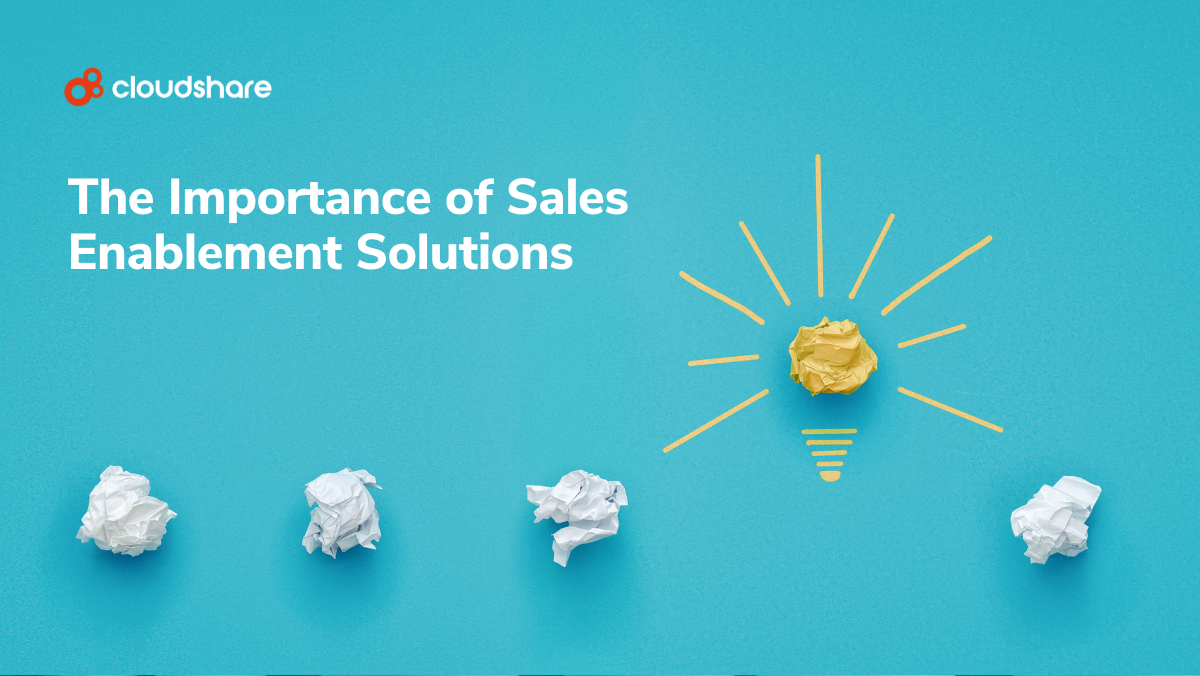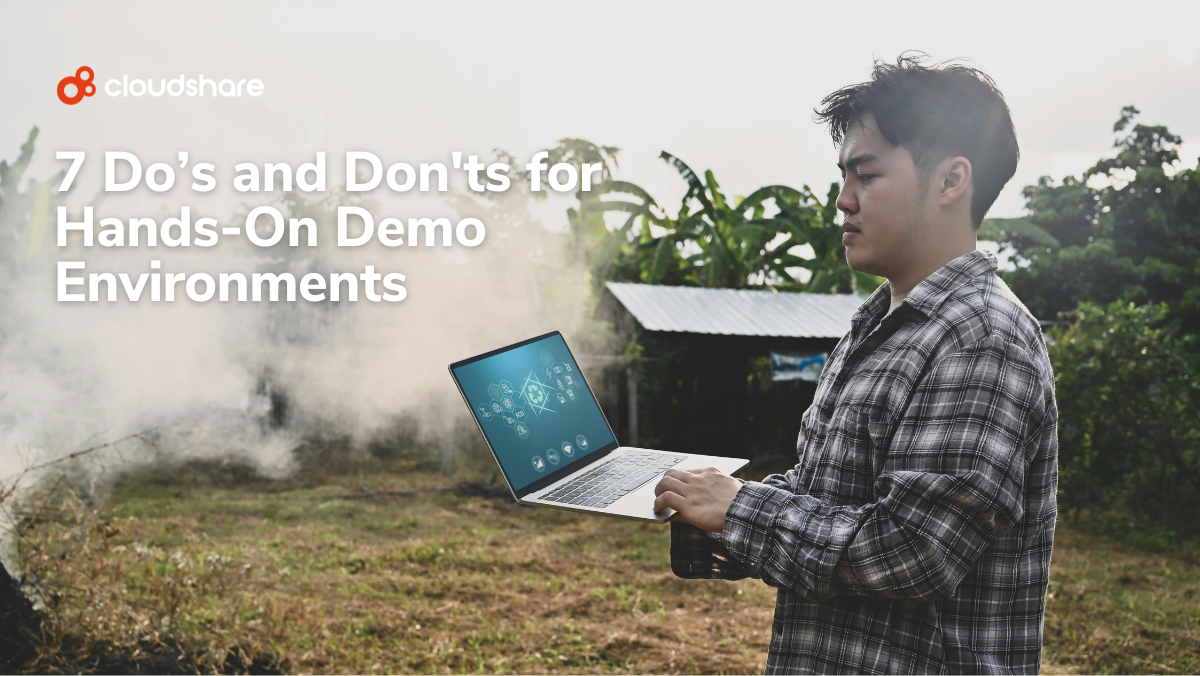
The customer journey doesn’t end when you close a deal. The post-sale phase determines whether a new customer becomes a long-term advocate or a short-term churn risk.
Training plays a central role here, equipping customers with the skills and knowledge they need not only to use your product but also to achieve meaningful outcomes with it. Yet post-sales customer training is also something far too many organizations overlook.
To compete in 2025’s crowded software market, businesses need a clear, structured post-sales learning strategy supported by the right tools and best practices.
Key Takeaways
- Post-sales training encompasses far more than onboarding.
- Personalization, interactivity, and collaboration drive engagement and improve both loyalty and retention.
- The most successful organizations blend product training with general education and relationship building.
What is Post-Sales Learning and Why Does It Matter?
Post-sales learning is education targeted at customers who’ve already purchased a product or service. Onboarding is the first and most common phase of the post-sales process. Other examples of post-sales training include skill development courses, certification programs, workshops, and keynote presentations.
Closely related to customer success training, post-sales learning empowers customers with the knowledge and skills they need to maximize the value of a product or service. In addition to being more engaged and satisfied overall, these customers require less support. This allows customer success teams to refocus their efforts elsewhere.
Understanding the Post-Sales Process
Many organizations focus only on the first stage of post-sales training. That means they could be missing out on multiple upsell, cross-sell, and referral opportunities. They’re also losing the chance to deepen their relationships with some of their most loyal customers.
When developing your post-sales learning strategy, keep the following timeline in mind:
- Onboarding. Typically takes place one to two weeks after purchase. Material at this stage focuses on product orientation.
- Initial Product Training. Usually occurs between two and four weeks after purchase. Focuses on reinforcing core competencies related to the product.
- Skills Reinforcement. Between one and three months post-purchase, short refresher modules and materials help customers retain crucial product knowledge.
- Practical Education. Two to six months after the sale, the focus shifts again to real-world scenarios, implementation guidance, and troubleshooting.
- Assessment. Concurrent with practical education, the business checks in with customers to evaluate satisfaction, knowledge retention, and skills gaps.
- Nurturing. An ongoing process from month six through to the end of a customer’s relationship with a business.
Certifications and professional development programs can be delivered at any stage except for onboarding. Similarly, training content on feature updates should be delivered whenever they become available.
Best Practices for Successful Post-Sales Training
Developing a post-sales training strategy requires a thorough understanding of your product, audience, and brand. From there, the process is as follows:
- Define clear learning objectives and outcomes.
- Assess customer skills gaps and knowledge gaps.
- Determine if there are any non-product areas customers want to explore.
- Identify appropriate delivery methods.
- Evaluate current support channels such as knowledge base and live chat.
- Develop content and modules based on your assessments.
- Create a tailored version of each module for each user segment.
- Consider additional tools and technologies like adaptive learning and virtual labs.
- Ensure analytics capabilities are in place.
- Use data insights to iteratively optimize and improve training material.
As you move down the checklist above, keep the following best practices in mind.
Keep Delivering Personalized Content
Personalization remains one of the most effective ways to make customer training more engaging. Combine audience segmentation with adaptive learning to deliver material tailored to each customer’s industry, use case, and ecosystem.
Provide Educational Resources
Customers should have access to the following:
- A searchable knowledge base for each product they use
- Advanced product training
- Information and education on new features
- Industry-specific content such as deployment guidance and use case examples
Prioritize Interactivity
Hands-on training will always be more effective than passive learning. Develop post-sales training content that allows customers to actively explore and practice with your software.
Combine Post-Sale Customer Education with Relationship Building
Customer enablement is critical for business success, encompassing every part of the customer journey. Its long-term goal, aside from empowering customers, is building a lasting relationship between business and client. Post-sales education is a cornerstone of that relationship, but it shouldn’t be your only focus.
Your efforts should also include:
- Community engagement through workshops, webinars, and events
- 24/7 product and technical support
- Proactive outreach
- Collaborative communication — customers should know they can reach out with ideas and concerns about your software
- Breaking down communication silos between sales, marketing, and customer success teams
Keep an Eye on the Data
In addition to feedback from customers, key metrics for measuring the results of your training include:
- Onboarding time
- Time to first value
- Usage details and trends
- Product adoption rate
- Usage frequency
- Usage depth
- Average session duration
- Ticket frequency
- User retention
- User churn
- Support costs
- Revenue growth
Go Beyond Your Product
Consider what your audience might want to learn outside of advanced product features and applications. If you sell a sales enablement tool, for instance, users might be interested in training focused on new sales techniques.
Bridge the Gap Between Onboarding and Post-Sales Enablement with CloudShare
Post-sales education is a core driver of customer satisfaction, retention, and revenue growth. There’s no denying the benefits of customer education.
When organizations continue to educate and support customers after the sale, they see higher adoption, stronger loyalty, and more opportunities for expansion.
The key is structure. A strong post-sales program blends product training with broader education, delivers interactive experiences instead of static content, and uses analytics to continuously refine the approach. Customers who feel supported, challenged, and valued stay longer and contribute more to your business.
CloudShare can help with that. With our virtual hands-on labs, your customer success team can spin up engaging, interactive training in just seconds. Book a demo today to see how CloudShare helps organizations build customer education programs that last.
Related Content: The Best LMS Platforms for Product Training
FAQs
What is post-sales learning and how is it different from onboarding?
Onboarding is part of post-sales learning, introducing customers to the basics of using a product or service. Outside of onboarding, post-sales learning is an ongoing process, providing education on advanced use, value optimization, and, in some cases, professional development.
Why is post-sales training important for customer retention?
First, customers with deeper product knowledge tend to be more satisfied and loyal. They also appreciate post-sales training that isn’t entirely focused on a business’s products — it helps them feel more valued by providing them with an opportunity for professional development.
What tools can I use to deliver effective post-sales training?
CloudShare’s virtual hands-on labs are a highly effective post-sales training tool, allowing your team to create and deploy engaging, interactive experiences with just a few clicks. Other useful solutions include Skilljar, Arlo, Loom, and Document360.
How can I measure the ROI of a post-sales learning program?
Divide customers into two groups: Those who’ve gone through your post-sales program, and those who haven’t. Look at business metrics such as customer retention, satisfaction scores, and support requests. You can also examine historic retention data to review your program’s long-term impact.
How does post-sales education support customer success teams?
Customers with access to post-sales training materials tend to require less direct assistance, leading to reduced support tickets, faster problem resolution, and greater overall satisfaction. Teams can focus more on addressing advanced problems than dealing with basic support requests.




